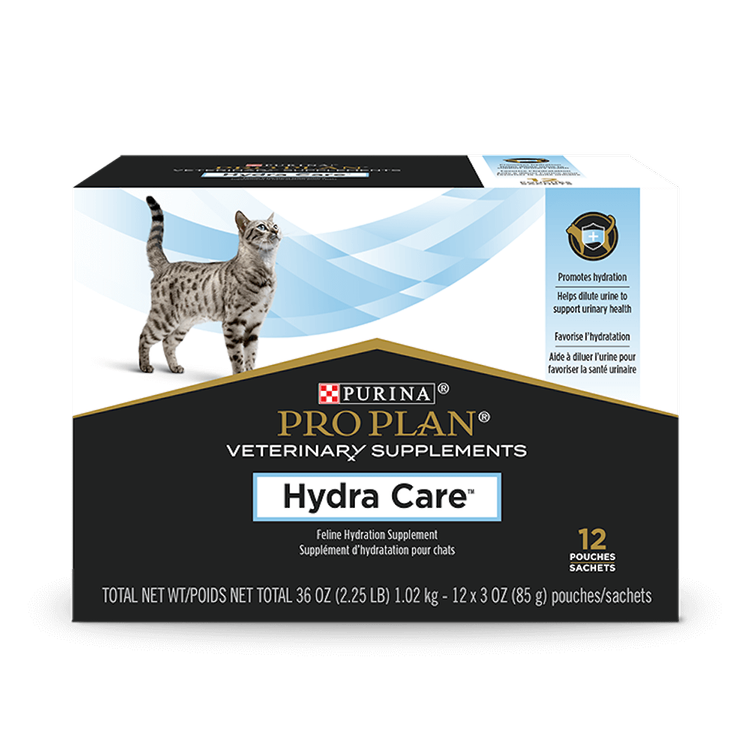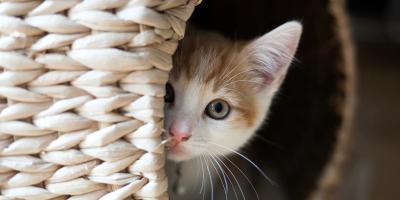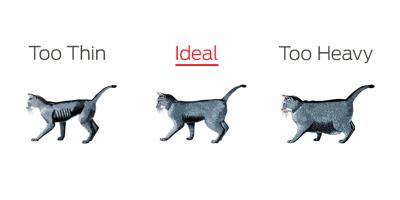
Cats are finicky about drinking water, and it may often seem like they don’t drink enough. Further, cats are typically inactive creatures, so how much water should a cat drink? Read on to discover the important role water plays in maintaining your cat’s health, signs of dehydration in cats and how to get a cat to drink water.
Keeping Your Cat Hydrated
Cats can obtain a certain amount of water from the food they eat and by producing it within the body. However, cats obtain the most water through drinking. If your cat is not sufficiently hydrated it can result in serious health issues.
The role water plays in health and well-being is wide and varied and includes:
- Regulating and maintaining normal body temperature
- Circulation
- Removing waste from the body
- Chemical reactions which are essential within the body
- Transportation of nutrients
- Digestion and absorption of nutrients
What Do Kittens Drink?
Although kittens drink their mother’s milk until she weans them as early as four weeks old, they also need to drink water. After being weaned off of milk, some kittens lose the ability to digest milk sugar efficiently. For this reason, it’s best to feed only a small quantity of milk to cats.
Signs of Dehydration in Cats
If your cat neglects her water bowl, she may become dehydrated. Signs of dehydration in cats include dry mouth, lethargy or depression, panting, loss of appetite and/or decrease in skin elasticity.
If you notice any of the above signs, call your veterinarian. They can give your cat fluids, rule out any potential illnesses and offer guidance on preventing dehydration in the future.
How to Get Your Cat to Drink More Water
Getting your cat to drink more water can be tricky. You may have to experiment until you find something she likes. Below is a list of suggestions on how to get a cat to drink water. Start with one or more of the suggestion and see how your cat reacts.
- Choose the Right Water Bowl: If your cat’s current water bowl is deep and narrow, it may touch her whiskers, which is uncomfortable. Try switching your cat’s water bowl to a wider, shallower dish with a smaller lip to see if she drinks more.
- Place it in the Right Location: Cats don’t like to be boxed into a corner, so they don’t like to have their food and water bowls in an out-of-the-way area. Make sure to put their food and water bowl in a location where they can see their surroundings and don’t have to worry about anyone sneaking up behind them.
- Keep it Fresh: The longer water sits, the more particles it collects. Dust, dirt, hair and more can all collect in your cat’s water bowl, making her less inclined to drink from it. Fill her bowl with fresh water one to two times a day.
- Try a Cat Water Fountain: Cats love running water and there are many theories why. In nature, felines may have learned to associate still water with contamination, so they instinctively gravitate toward running water. It may also appeal to more of their senses, as they can see it move, hear the sound it makes and even taste a difference. A cat water fountain can make drinking water more exciting and pleasurable for your kitty.
- Add Wet Food to Her Diet: Water isn’t the only way to keep your cat hydrated. If you’ve tried all the above and she’s still not drinking enough, try giving her some wet cat food. Wet cat food can’t replace water altogether, but supplementing her diet with it can help increase her overall water intake and help prevent dehydration.
Keeping Your Cat Hydrated with Wet Food
Besides providing needed protein and other vital nutrients, wet cat food helps promote proper hydration by allowing your cat to take in fluids from the food. Here’s why:
- Many domestic cats can trace their roots back to the arid climates of Africa and the Middle East. Sources of fresh water were hardly prevalent, particularly outside of the rainy season.
- As cats evolved, they adapted to their dry habitat by deriving much of their hydration from their prey. And with the bodies of most animals being comprised of water, it’s easy to connect the dots as to why this proved successful.
For some cats, even the fanciest water bowls and cat fountains and the most delicious wet foods aren’t enough. If your cat still isn’t drinking enough water, talk to your veterinarian. They may recommend a cat hydration supplement or give you more tips to help increase your cat’s water intake.
Not only do cats drink water, but it’s vital for their survival. Keeping your cat hydrated will help keep her happy and healthy.
Related articles




